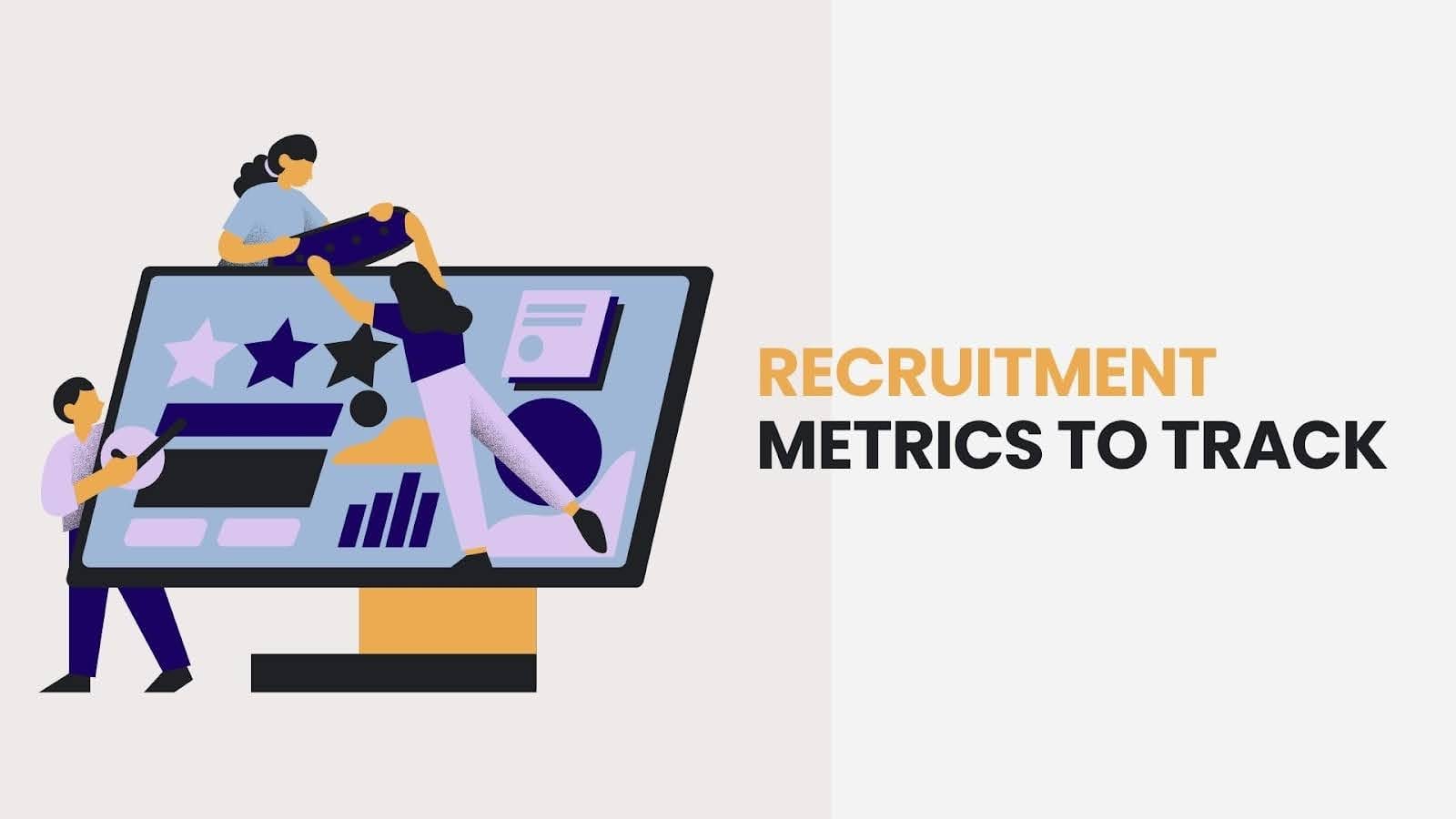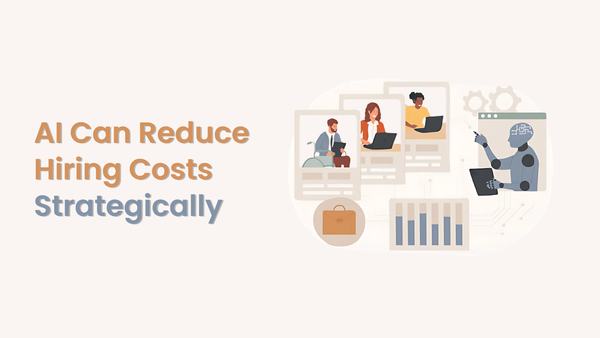Hiring in the UAE is hotter than ever. The latest ManpowerGroup Employment Outlook Survey ranked the country #1 globally for hiring optimism heading into Q3 2025. That means recruiters and employers here are competing in one of the most active talent markets worldwide.
In such an environment, recruitment can’t be left to guesswork. Every hire carries weight; shaping not just team dynamics but the overall growth trajectory of a business. This is where tracking recruitment metrics comes in.
By keeping an eye on the right numbers, businesses can pinpoint what’s working, cut out inefficiencies, and fine-tune their strategies to attract top talent faster. More importantly, it allows recruiters to balance speed with quality, ensuring new hires are not just quick fills but long-term assets to the organisation.
In this blog, we’ll discuss the 14 most important recruitment metrics every UAE employer and recruiter should track. These insights will help you refine your hiring process and stay ahead in the competitive talent market.
Key Takeaways:
- Tracking key recruitment metrics helps businesses optimise their hiring process, improve candidate quality, and ensure more efficient hiring.
- Metrics like time to fill, quality of hire, and offer acceptance rate are essential to evaluating recruitment success and refining strategies.
- By measuring candidate experience, companies can enhance their employer brand and increase engagement throughout the hiring process.
- Analysing sourcing channels and cost per hire allows businesses to allocate resources more effectively, reducing recruitment costs and improving ROI.
- Regularly reviewing recruitment metrics empowers teams to make data-driven decisions. It streamlines workflows and aligns hiring strategies with overall business goals.
What Are Recruitment Metrics?
Recruitment metrics, also known as KPIs (Key Performance Indicators), are data points that measure the effectiveness and efficiency of your recruitment efforts. These metrics give HR and recruitment teams the necessary insights to evaluate the success of their hiring strategies. By tracking these metrics, companies can assess their recruitment performance and make data-driven decisions to optimise their processes.
Besides, tracking recruitment metrics is about identifying the factors that lead to better hiring results and continuously improving on those. For example, by measuring time to fill and cost per hire, companies can assess how quickly and cost-effectively they are hiring.
Why Are Recruitment KPIs Important?
Recruitment KPIs play a critical role in refining recruitment strategies. By tracking the right metrics, organisations can avoid common pitfalls like excessive hiring costs, long hiring times, or high attrition rates. KPIs also allow businesses to identify their most effective sourcing channels and optimise their recruiting efforts for maximum efficiency.
In addition, recruitment KPIs provide the framework to:
- Assess the quality of candidates and how well they align with company culture.
- Improve candidate experience and satisfaction.
- Align your hiring approach with the skills and roles your business truly needs.
Now, let’s explore the top 14 key recruitment KPIs that every organisation should track to improve its hiring process.
Also Read: 10 Tips To Optimise Your Recruitment Process
Top 14 Key Recruitment Metrics to Track
Tracking recruitment metrics is about knowing what drives better hires. The following 14 metrics give you a clear view of speed, cost, quality, and candidate experience, helping you refine your strategy and make smarter hiring decisions.
1. Time to Fill
Time to Fill is the time it takes from the moment a job requisition is opened until the job offer is accepted by the candidate.
Why It Matters: Time to fill is an important metric that reflects the efficiency of your recruitment process. A shorter time-to-fill suggests that the recruitment team is operating efficiently, and positions are being filled quickly.
Actionable Insight: To reduce time-to-fill, invest in automation tools like AI-powered sourcing platforms (e.g., Tidyhire’s RIA) to speed up candidate identification and screening.
2. Time to Hire
Time to Hire is the time taken from the moment a candidate applies to the job until they accept the offer.
Why It Matters: Time to hire impacts your company’s workforce readiness; taking too long to fill a role often means the best candidates accept offers elsewhere.
Actionable Insight: Using AI-driven tools for screening and interview scheduling can speed up this process, helping you secure top talent before they move on to other opportunities.
3. Cost per Hire
Cost Per Hire is the total cost incurred to hire a candidate, including job advertisements, recruitment agency fees, and internal HR costs.
Why It Matters: This metric helps businesses assess the financial efficiency of their recruitment strategies. A high cost per hire might indicate that you’re overspending on recruitment.
Actionable Insight: To reduce costs, focus on sourcing candidates through lower-cost channels, such as employee referrals. You can also automate as many recruitment tasks as possible.
4. Quality of Hire
Quality of Hire measures the performance, retention, and cultural fit of new hires.
Why It Matters: Ensuring high-quality hires is essential for long-term organisational success. A quality hire directly influences the overall productivity and culture of the company.
Actionable Insight: Implement continuous post-hire evaluations and surveys to gauge employee satisfaction and performance. Adjust your hiring processes based on this feedback to improve future hires.
5. Source of Hire
Source of Hire identifies where your hires are coming from, whether it's job boards, employee referrals, social media, or recruitment agencies.
Why It Matters: Monitoring where your hires come from reveals the channels that deliver the strongest talent. This makes it easier to focus your efforts on the most effective sources.
Actionable Insight: Invest more in high-performing sources like employee referrals or niche job boards and reduce efforts on underperforming channels.
6. Sourcing Channel Effectiveness
Sourcing Channel Effectiveness measures the effectiveness of different recruitment channels, such as LinkedIn, Indeed, or job fairs.
Why It Matters: By evaluating which channels provide the best candidates, you can adjust your sourcing strategy and budget for maximum ROI.
Actionable Insight: Focus on sourcing channels that consistently deliver top candidates, and continually assess the performance of these channels.
7. Offer Acceptance Rate
Offer Acceptance Rate is the percentage of candidates who accept a job offer out of those who receive one.
Why It Matters: This metric helps measure the attractiveness of your job offers. A low acceptance rate might suggest that your compensation packages or recruitment process needs to be reviewed.
Actionable Insight: Improve offer acceptance by ensuring competitive compensation packages and communicating job benefits and culture effectively during the hiring process.
8. Candidate Experience
Candidate Experience measures how candidates perceive the recruitment process, from application to offer.
Why It Matters: A positive candidate experience can boost your employer brand, while a negative experience can drive top talent away.
Actionable Insight: Use candidate feedback surveys to identify pain points in the hiring process and address them to improve overall candidate experience.
Also Read: Understanding The Scope Of Talent Acquisition
9. First-Year Attrition
First-Year Attrition is the percentage of new hires who leave the company within the first year.
Why It Matters: High first-year attrition can be a sign that candidates are not the right cultural or performance fit, leading to unnecessary turnover costs.
Actionable Insight: Improve your recruitment strategies by focusing on cultural fit and aligning expectations between the candidate and the role.
10. Interview-to-Hire Ratio
Interview-to-Hire Ratio is the ratio of interviews conducted to hires made.
Why It Matters: This metric indicates how well your interview process is performing. A high ratio might indicate that your screening process isn’t effective enough.
Actionable Insight: Streamline interviews by using tools like Tidyhire's Charlie AI interview tool to assess candidates more efficiently, reducing unnecessary interviews.
11. Application Completion Rate
Application Completion Rate is the percentage of candidates who complete the application process after starting.
Why It Matters: A low completion rate can indicate problems with your application form or user experience, leading to fewer candidates in your pipeline.
Actionable Insight: Simplify your application process and optimise for mobile users to make applying easier and faster.
12. Recruitment Funnel Effectiveness
Recruitment Funnel Effectiveness measures the performance of your recruitment process at each stage, from sourcing to hiring.
Why It Matters: Understanding where candidates drop off helps optimise the recruitment funnel. This helps in achieving a higher conversion rate at each stage.
Actionable Insight: Regularly review the conversion rate of each stage and implement improvements, such as clearer job descriptions or better follow-up communication.
13. Cost per Sourcing Channel
Cost per Sourcing Channel tracks how much it costs to hire from different sourcing channels.
Why It Matters: It helps evaluate which sourcing methods are cost-effective and which need to be optimised or replaced.
Actionable Insight: Reallocate resources to high-performing channels and reduce investment in channels with poor conversion rates.
14. Time to Productivity
Time to Productivity is the time it takes for a new hire to reach optimal performance in their role.
Why It Matters: Reducing time to productivity ensures that new employees are contributing to business goals as quickly as possible.
Actionable Insight: Implement tailored onboarding programs and continuous learning opportunities to accelerate new hires’ learning curve.
Also Read: Free Recruiting Tools to Use in 2024
Turning Recruitment Metrics Into Measurable Wins with Tidyhire
Measuring recruitment metrics is crucial, but acting on those insights is where the real transformation happens. That’s exactly where Tidyhire adds value. With automated daily reports and real-time dashboards, recruiters can track important metrics without juggling multiple tools.
What makes it smarter is Tidyhire’s Recruiting Intelligence Agent (RIA). RIA automates sourcing across 30+ platforms, engaging candidates, and streamlining follow-ups from a pool of over 700 million profiles.
This means you’re not only tracking the right numbers but also improving them with intelligent automation. In short, Tidyhire helps you measure, optimise, and scale recruitment; all in one place.
Conclusion
Tracking key recruitment metrics is vital for optimising the efficiency and effectiveness of your hiring process. By measuring time to fill, cost per hire, and other key KPIs, companies can make informed decisions, improve candidate quality, and reduce recruitment costs.
Additionally, with the right tools and strategies, recruitment teams can continuously refine their hiring processes for better results.
If you're looking to improve your recruitment processes and track these vital metrics more efficiently, Tidyhire can help. Book a call to learn how our AI-driven platform can streamline your recruitment and track key metrics.
Frequently Asked Questions
How to measure the performance of a recruiter?
Recruiter performance can be measured by tracking key metrics such as time to fill, quality of hire, offer acceptance rate, candidate experience, and hiring manager satisfaction. These metrics indicate efficiency, effectiveness, and the recruiter’s ability to attract quality candidates.
How to create recruitment metrics?
The first step in setting recruitment metrics is to define KPIs that directly support your business goals. Focus on metrics like time to hire, cost per hire, quality of hire, and candidate experience, then regularly track, analyse, and refine your processes.
What is the most underutilised metric in recruiting?
The most underutilised recruitment metric is candidate experience. Despite its importance in shaping employer brand perception and improving candidate engagement, many companies neglect to measure how candidates feel about the recruitment process, impacting overall hiring success.
What metrics can companies use to evaluate if their hiring practices are truly fair?
To evaluate fairness in hiring practices, companies can use metrics like adverse impact, candidate diversity, and offer acceptance rate. These help assess if certain demographic groups are disproportionately excluded or favoured during the recruitment process, ensuring diversity and inclusion.
What are some of the most essential human resource metrics?
Essential HR metrics include turnover rate, which measures employee attrition and yield ratio, indicating the effectiveness of recruitment sources. Another metric could be human capital assessment, evaluating the skills and capabilities of employees, ensuring that the organisation maximises workforce potential.



